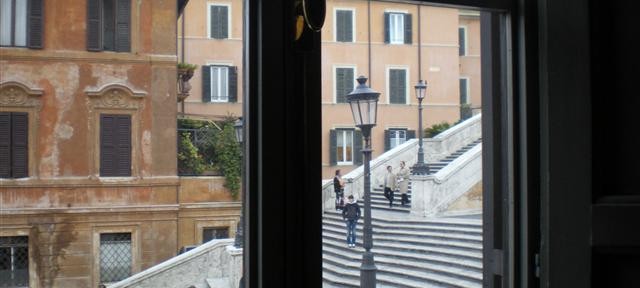When I looked up at the ceiling in the Keats-Shelley House in Rome, this is what I saw. Words do fail you sometimes when you see something beautiful or extraordinary. It’s important to look and absorb the experience and later reflect on it. Stored away in your mind it may resurface when you least expect it. It might inform, illuminate or illustrate an idea in your writing. Refracted through the lens of your imagination it may become a new thing of beauty.
It was later that I thought about Keats and his friends going about their business in the house, drinking and talking, reading and writing. Was this carved wooden field of flowers one of the last things Keats saw as he lay dying of consumption on his tiny bed in his study overlooking the glorious Spanish Steps?
Those who saw Jane Campion’s film Bright Star (2009) about John Keats’s love affair with Fanny Brawne, will remember a beautiful, albeit brief, scene near the end. The camera pans across an empty Piazza di Spagna as the early morning mist rises and the only sound is the clack-clack of horses’ hooves on cobbles. A funeral carriage is collecting the body of Keats from his lodgings where he has just died of tuberculosis. His body will be taken out of the city, as Vatican law demanded, to be burned along with his furniture, personal possessions and manuscripts.

I have just returned from that place, walking in Keats’s footsteps, standing in his bedroom, looking out onto the Piazza, the Fontana della Barcaccia and the curving sweep of steps up to Trinità dei Monti church. I studied glass cases with Keats’s wax death mask and curls of his burnished-gold hair, searching for the poet within the relic. To wake afresh each morning there, to look out in that special light, breathe that hungry air and walk where Keats once walked is special. Rome in October is a fitting place to be to celebrate the season of mists and mellow fruitfulness. November 2009

